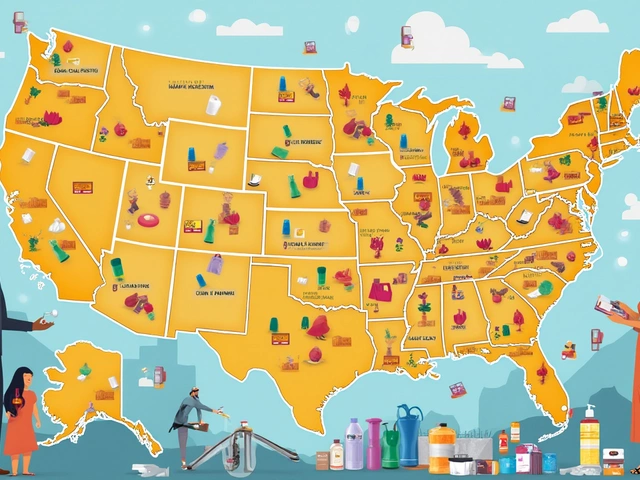Bootstrap stories aren’t just Silicon Valley mythology. Think you need big stacks of cash to make things? Wrong. Some of the most successful manufacturing businesses started almost empty-pocketed, building from pure hustle, free resources, and creative partnerships. If you’re sitting on a killer idea but your bank balance looks like a bad joke, keep reading. People have pulled this off before, and you can too. It takes a new perspective on money, lots of hustle, and smart connections, but it’s far from impossible.
Debunking the Myth: Can You Really Start Manufacturing With No Money?
First, the hard truth: there will always be some costs, even if it’s just your time and sweat. When people say, "start with no money," they mean you don’t need a fat savings account or hefty loans right out of the gate. Zero-capital startups are rare in high-tech or heavy industry, but small-scale manufacturing businesses pop up all the time with next to nothing invested.
Here’s a wild stat: According to the U.S. Small Business Administration, roughly 39% of micro-businesses begin with less than $5,000 in startup capital. Many grind right from home, garages, or community spaces. Sharon Rowe started Eco-Bags with $5 and a borrowed sewing machine. There’s even a guy who launched bamboo toothbrushes by trading chores for raw bamboo and hand-whittling them at his kitchen table. The catch? You have to get creative with what “money” means. Think skills, networks, time, barter, partnerships, sweat equity. If you’re more resourceful than rich, you have a shot.
But let’s not sugarcoat it: preparation is everything. To make it work, you need laser-sharp focus on your product idea, a grip on how your market behaves, and the guts to reach out to strangers for help. Instead of fancy factories and shiny machines, intent entrepreneurs hustle for micro-lending, use free makerspaces, pitch to angel investors, or land barter deals that let them use equipment in exchange for future products. This is when you realize that "no money" is often just no cash up front. Every hour you trade, every relationship you build, every clever hustle is money in another form.
Finding the Right Product: Low-Cost Ideas That Scale
The product you pick decides how realistic starting small—or with nothing—really is. Some sexy ideas flat-out require big funding: forget about chip fabrication, pharmaceuticals, or aircraft parts if you’re broke. But tons of manufacturing niches are much more approachable. Knocking out low-cost, high-demand products works best—think eco-friendly bags, soap making, screen-printed T-shirts, candles, simple electronics, or small home decor items. Even 3D printing hustlers have bootstrapped with borrowed printers or makerspace memberships (often free for students or residents in some cities).
Here’s a crazy-smart hack: Launch with made-to-order or pre-sale models. This means you don’t produce anything until you have buyers—or at least some commitment from early adopters. Instead of building up inventory, advertise through social media, local fairs, and community groups. You can offer a prototype or virtual mockup to prove your concept. When someone bites, you use their payment to buy the materials and start making. Platforms like Kickstarter and Indiegogo have shown that customers will pay for things before they’re made—especially niche products that solve a real problem.
The bonus with this model? You eliminate the deadweight costs of unsold goods and storage space. Print-on-demand services can take manufacturing woes off your plate for certain products (like mugs, shirts, or phone cases), letting you focus on sales and marketing. In the first six months, expect to experiment and pivot. If buyers react lukewarm to your soap, pivot to bath bombs. That’s not failure, that’s feedback. Use it to shape the next batch—just like Ben Francis did with Gymshark, sewing fitness gear in his bedroom while running on zero dollars but sheer tenacity.

Leveraging Free and Low-Cost Resources: Places, Tools, and People
Ever heard of makerspaces? They’re goldmines for first-time builders. These are community-run workshops that offer free or cheap access to the kind of expensive gear you dream about: 3D printers, CNC machines, woodworking tools, even electronics benches. Search your local area and you’ll probably find one tied to a library, university, or nonprofit. Some only ask for volunteer hours or a barter deal—meaning you don’t need to cough up money at all.
Don’t have a space? Look around you. Garages, spare bedrooms, even sheds become pop-up workshops for thousands around the world. If you think that’s too low-rent, remember that Apple, Harley-Davidson, and Mattel all started life in garages. You’ll see die-hard DIYers building furniture from curbside wood or repurposing old machines. Craigslist and Facebook Marketplace can be rabbit holes for free or cheap second-hand tools and starter supplies. You can even post a “wanted” ad and barter your own skills for what you need.
When you look past buying, borrow or lease your way up. Many equipment companies offer leasing deals for new manufacturers—some even defer payments until you’ve made your first sale. Or just ask. There are factory owners who let off-hours use of their gear in exchange for repairs or a cut of profits. Pulling this off? It’s about networking like crazy—meetups, local business associations, LinkedIn, even TikTok (believe it or not, #smallbusiness TikTok is a thing). You never know who in your circle has a warehouse corner to spare or a contact in procurement. Hustle is currency.
| Resource Type | Example | Typical Cost |
|---|---|---|
| Makerspace Access | Local library workshop | $0 - $50/month |
| Equipment Leasing | Used 3D printer rental | $0 up front (deferred payment) |
| Material Sourcing | Craigslist, bartering | Often free |
| Remote Collaboration | Online freelance design | Skill swap or barter |
People power is real. Team up with makers, hobbyists, students, or retired craftsmen. They might lend expertise or muscle in return for ownership, hourly pay later, or the simple thrill of building something new. Sweat equity—trading labor or smarts for future profits—lets money-poor founders grab talent they couldn’t otherwise afford. Many product-based startups launched as weekend partnerships, growing only as profits trickled in. If you bring energy, people often meet you halfway.
Funding Tricks: Move Beyond Traditional Loans
Banks giving you side-eye? Don’t sweat it. Most banks won’t shell out loans for folks with no assets or track record. But you’ve got options. Crowdfunding has exploded in the past decade. Launching on Kickstarter or Indiegogo lets you raise funds directly from buyers who want your product. Look up the story behind Pebble smartwatches—$10M raised to make the first batch, all from pre-orders alone. This model fits your “no money” situation perfectly. No need for piles of unsold goods or fat inventories to pay back risky loans.
Angel investors and micro-VCs are cranking up their presence in ultra-early stage hardware. If you can pitch a compelling story—product, audience, passion, real problem—you just might find someone to front you the dough for a seat at your future table. Don’t ignore local government schemes or business grants; countries from India to the U.K. dedicate dollars for rural manufacturing, new technologies, or jobs programs. Some government-backed startup incubators even hand out small grants to test manufacturing pilots, especially if you employ locals or use recycled materials.
One underrated source? Friends and family. It’s old-school but effective, especially if you keep things legit with clear terms. Sometimes a group of believers chips in small amounts—$100 here, $500 there—to cover materials so you can deliver pre-sold orders. This works when your idea is easy to explain or samples are already tested (say, a killer new spice blend, custom toys, home gadgets). Be transparent: write down repayment terms, equity splits, or profit-sharing. An early deal gone sour can wreck more than your business, so keep it clean.
Here’s another street-smart tactic: Find a local manufacturer and negotiate a small production run with deferred payment, using customer pre-payments to settle up. Some contract manufacturers will do small jobs if they see future promise—especially if you cover raw material costs (sometimes you can supply those piecemeal or trade with other business owners).
- Pre-sell to real customers—collect deposits up front
- Crowdfund to a challenge (raise $X by a deadline or don't build)
- Barter services for supplies: web design for gear, marketing for raw materials
- Team up with partners for pooled resources (split costs, share space/equipment)
- Get creative with payment terms—ask for 30-60 day payment cycles from suppliers
The less you rely on debt or big money up front, the less risk you take and the more grit you build for the ups and downs of manufacturing life.

Building a Lean, Nimble Business: Launch and Grow Without Breaking the Bank
Now to put it all together. The real trick? Starting lean. Don't blow your sweat equity or borrowed resources on fancy branding and bulk production. Start with a minimum viable product (MVP)—just good enough to make, sell, and learn from. Ship a small batch. Get feedback. Use any profits to fix bottlenecks, improve design, or buy bulk materials (they’re always cheaper this way). And never be afraid to iterate—customers respect it. They know they’re buying from a hustler, not a faceless giant. Stay honest with buyers about your process and capacity—it builds trust and forgiveness if things go slow or you need to tweak the formula.
As soon as you can, systematize simple stuff. Use free (or nearly free) tools like Google Sheets, Trello, Wave Accounting, and WhatsApp to run production, sales, and logistics. Lean businesses mean you don’t fall apart when cash gets tight or an order gets delayed. People won’t judge your backroom operation—if anything, it’s now a selling point. The "local," "made to order," or "community-powered" angle? It works wonders in marketing.
Don’t just make—tell your story. Use social media and email newsletters to pull in buyers who want to root for the underdog. Show your process. Explain your origin story. Ask happy fans for testimonials or Instagram snaps. Show that every purchase goes right back into making the next batch better or helping folks in your area. This type of transparency can turn customers into genuine supporters (who buy again).
Always keep scaling in your scope, but don’t rush. Small wins—like a new wholesale account or a local retailer stocking your goods—can snowball. Each reinvested dollar can buy freedom from your day job or more hours to scale up production. Don’t be afraid to outsource steps (stuffing envelopes, basic assembly) once the profits cover it. The smartest zero-dollar founders I’ve known have grown out of kitchen-table batches to small industrial spaces within a year, funding each jump by profits—not debt.
| Step | Free/Low-Cost Tool |
|---|---|
| Process management | Trello, Google Sheets |
| Product design | FreeCAD, Canva |
| Accounting | Wave Accounting |
| Sales outreach | Instagram, WhatsApp |
Kick off every new idea with a "how can I do this for free?" mentality. There’s almost always someone giving away free advice, old gear, a spare room, or web traffic. Use it ruthlessly—but give back, too. Share your own lessons, mentor someone lagging a step behind, and stay plugged into the community that gave you your start. That’s how you stay relevant, solvent, and respected, even long after money starts flowing into your business for real.




